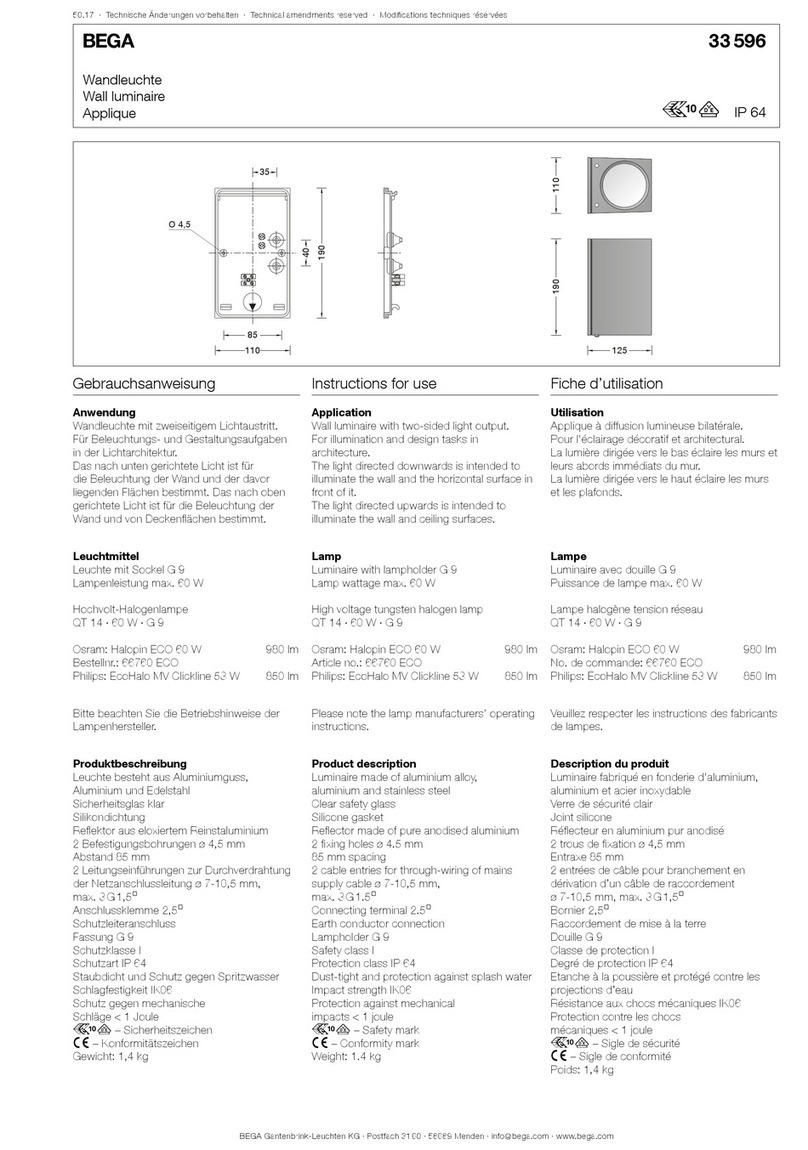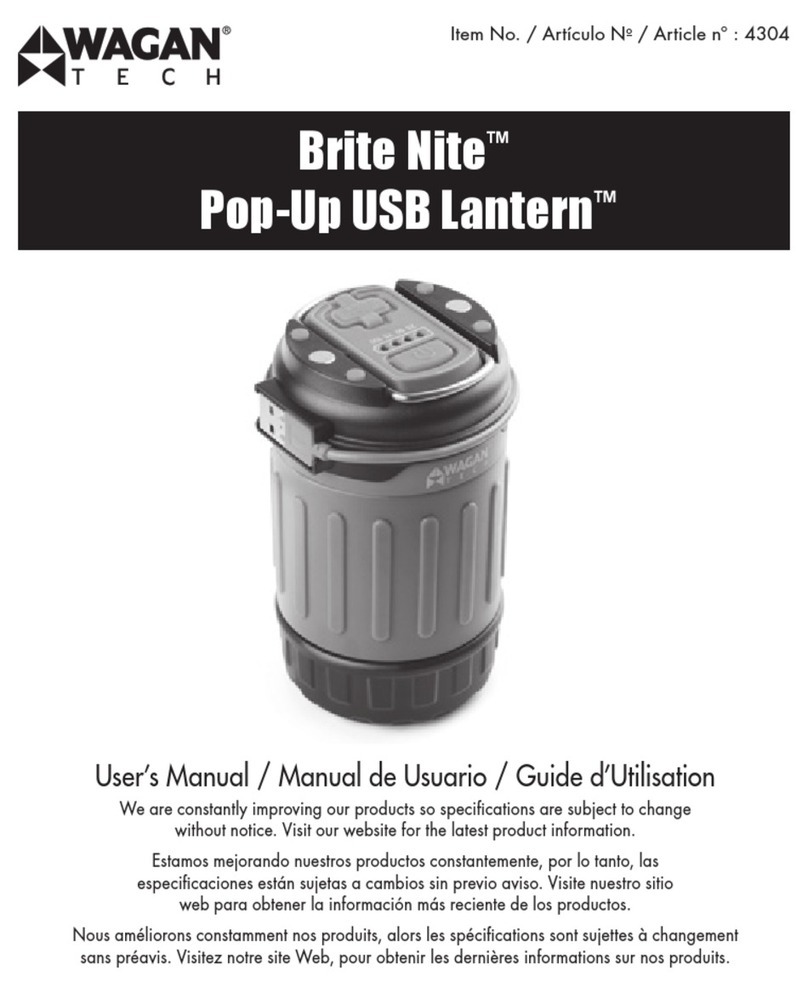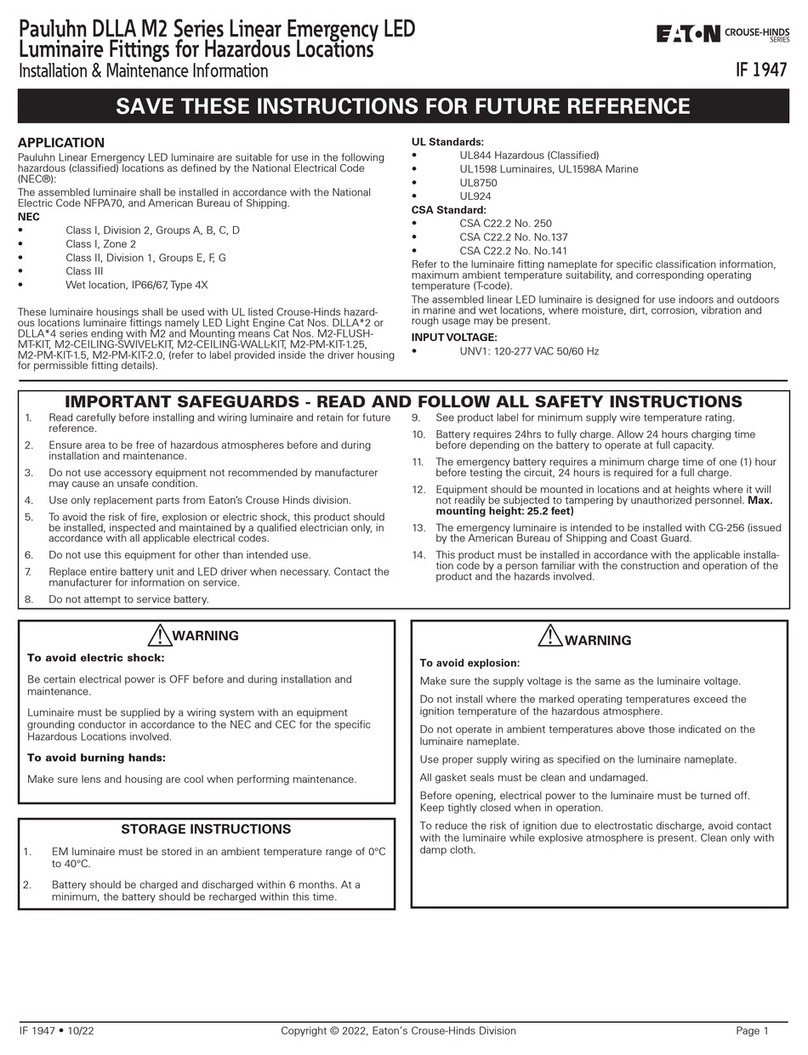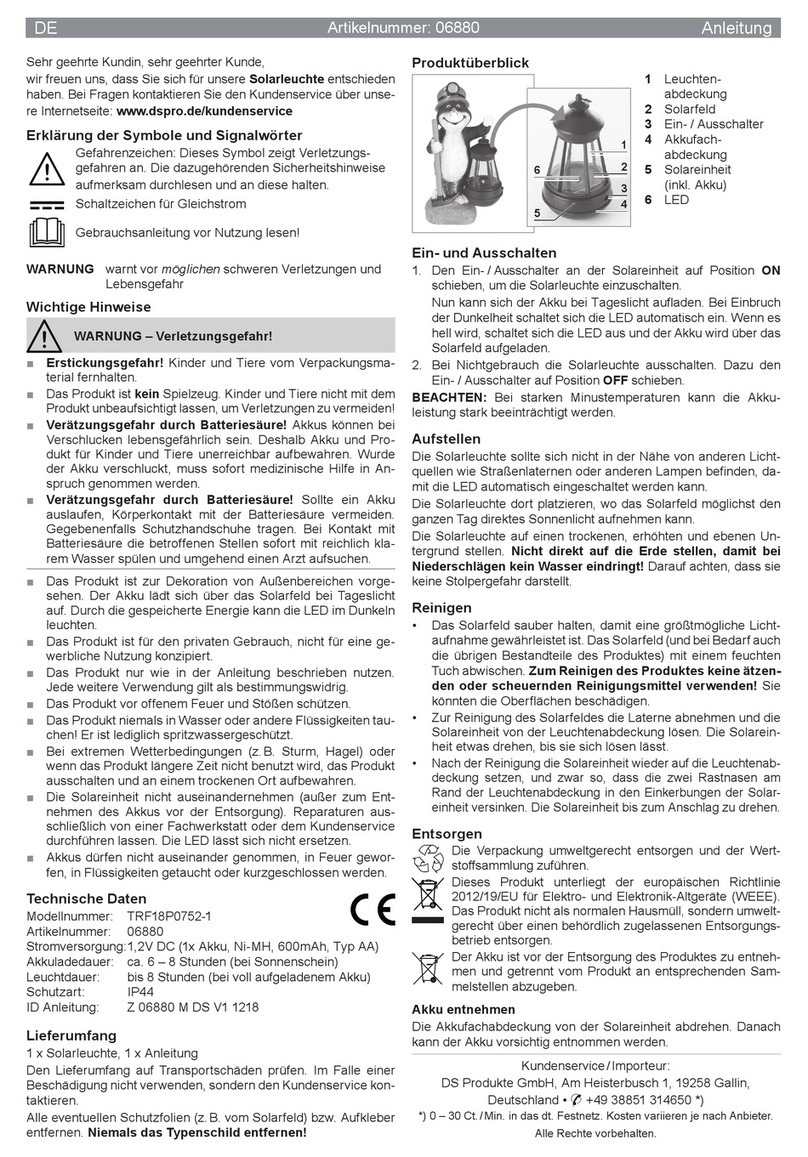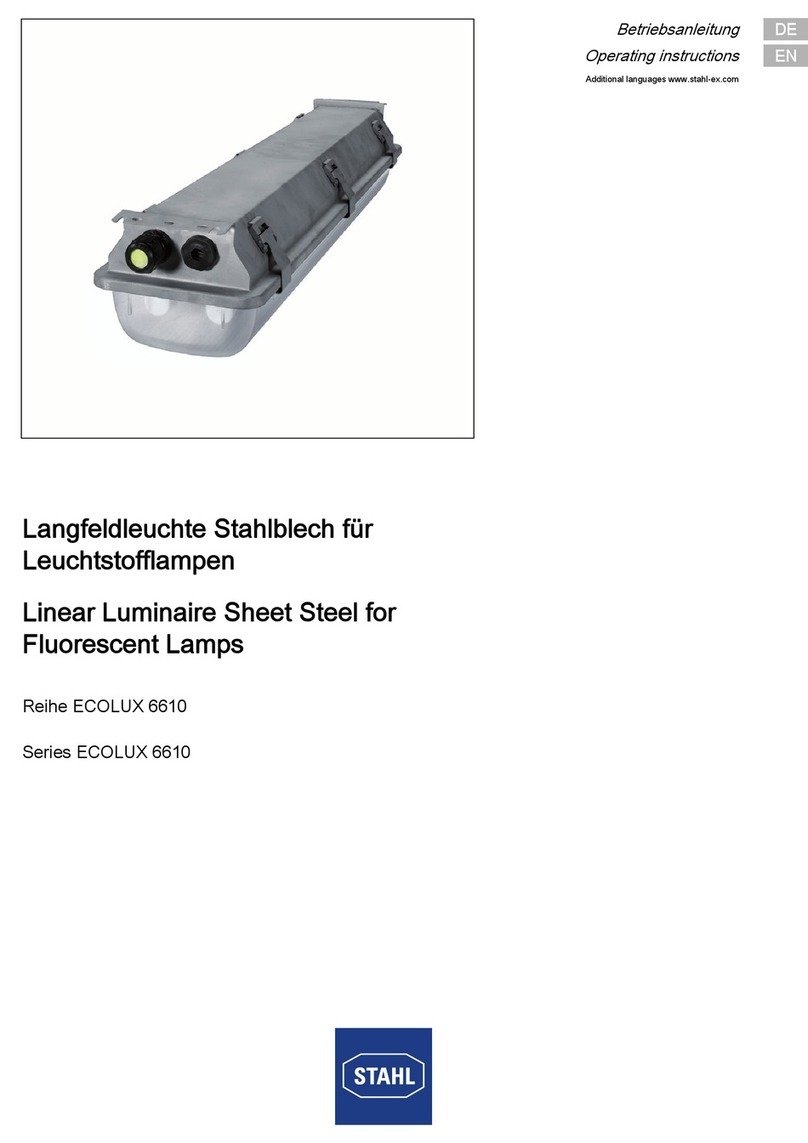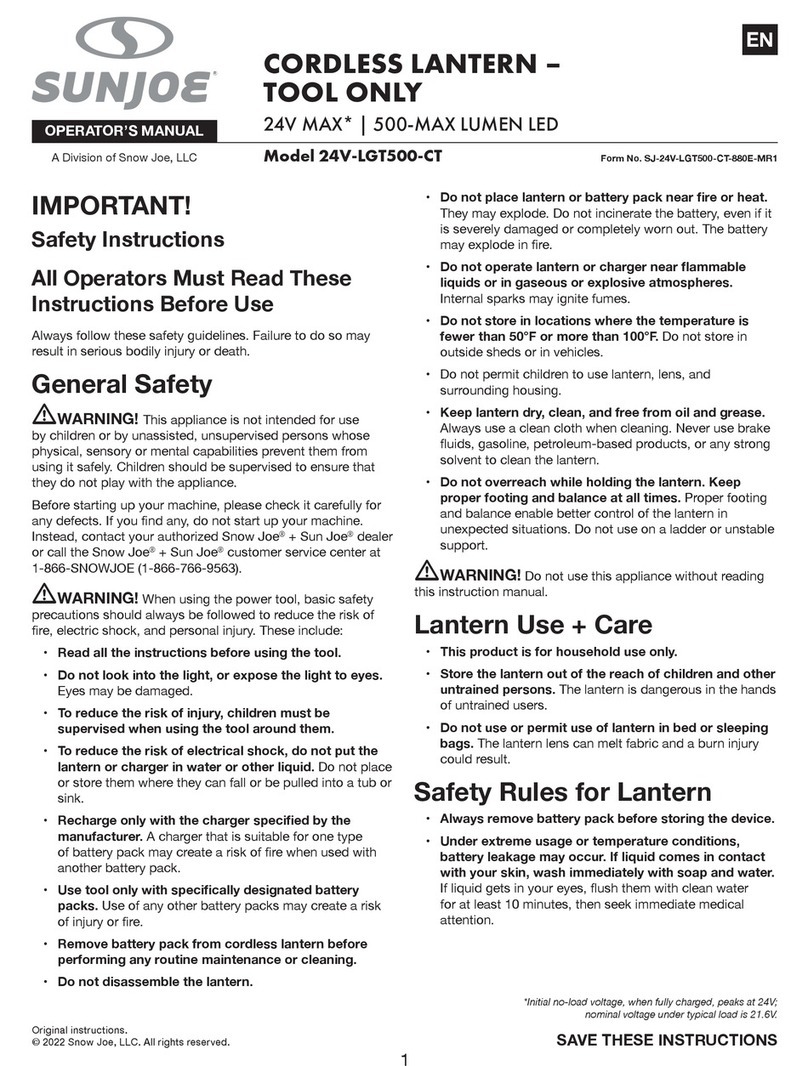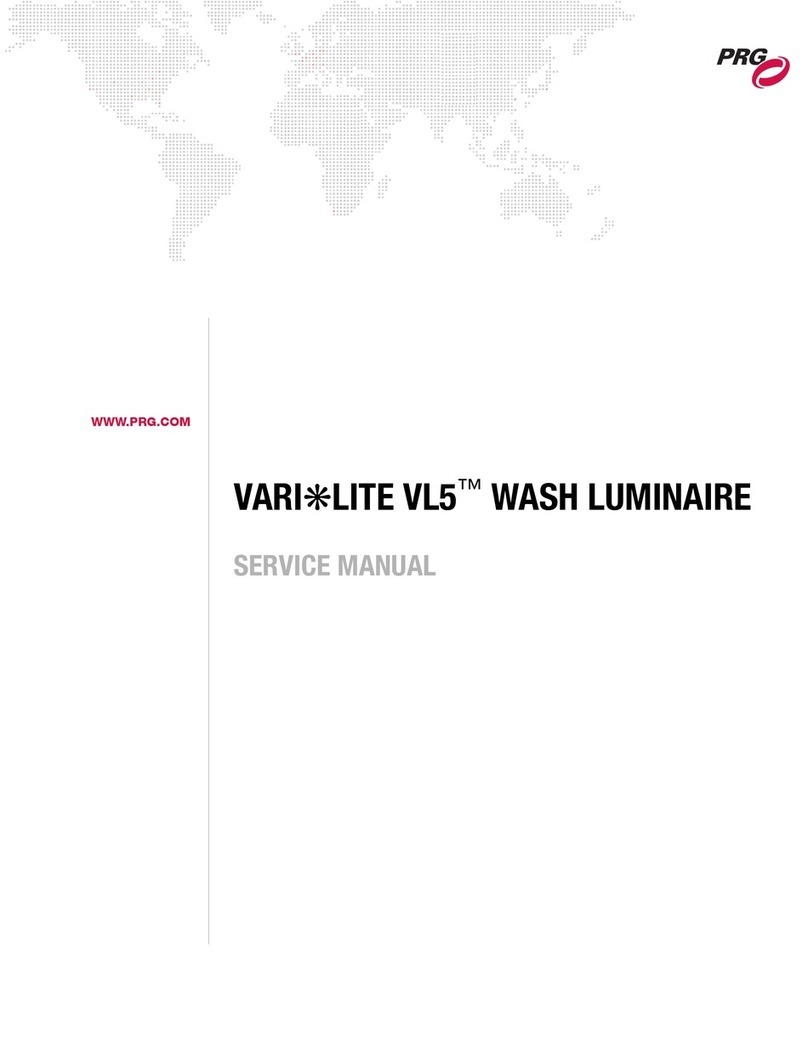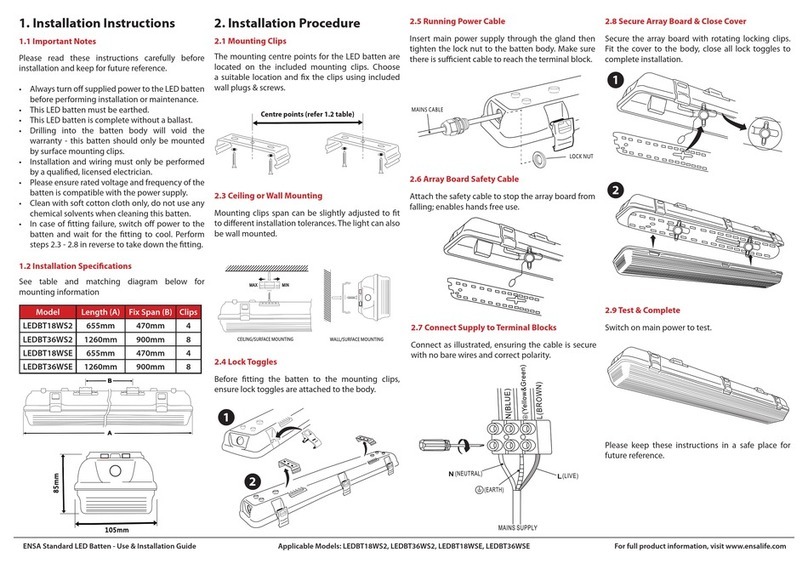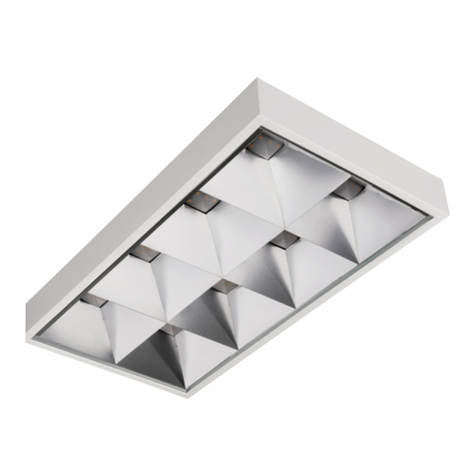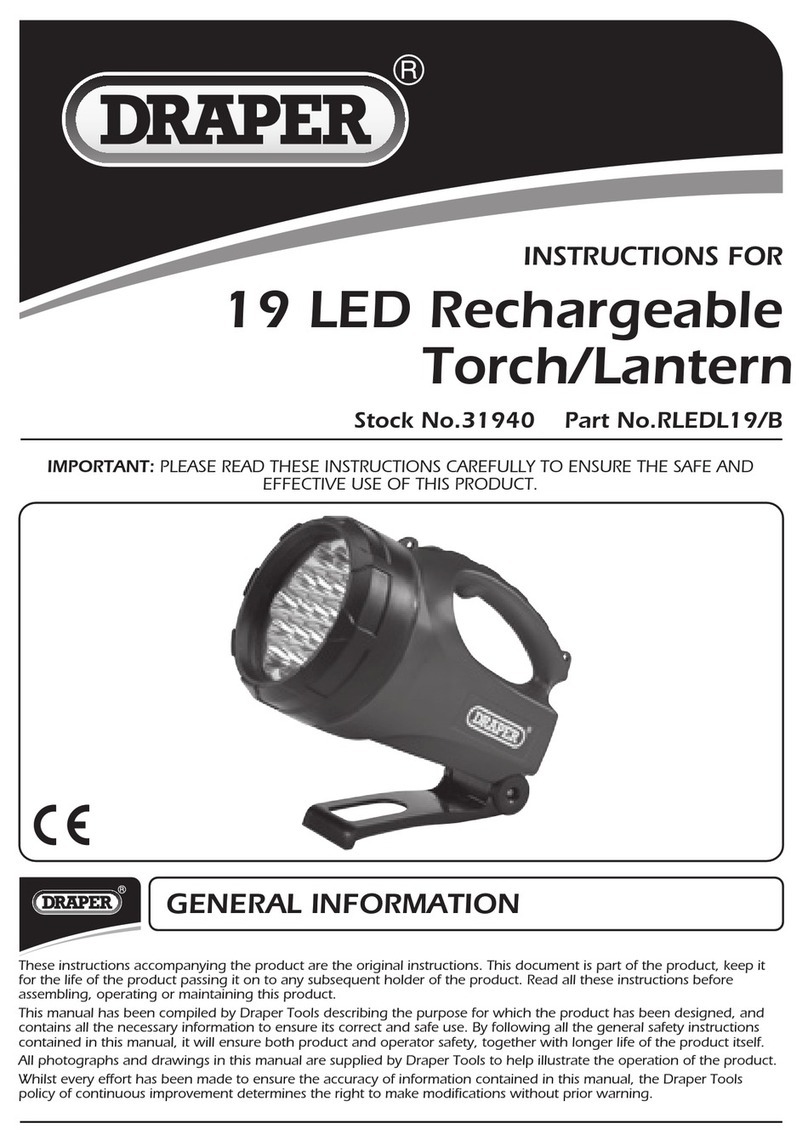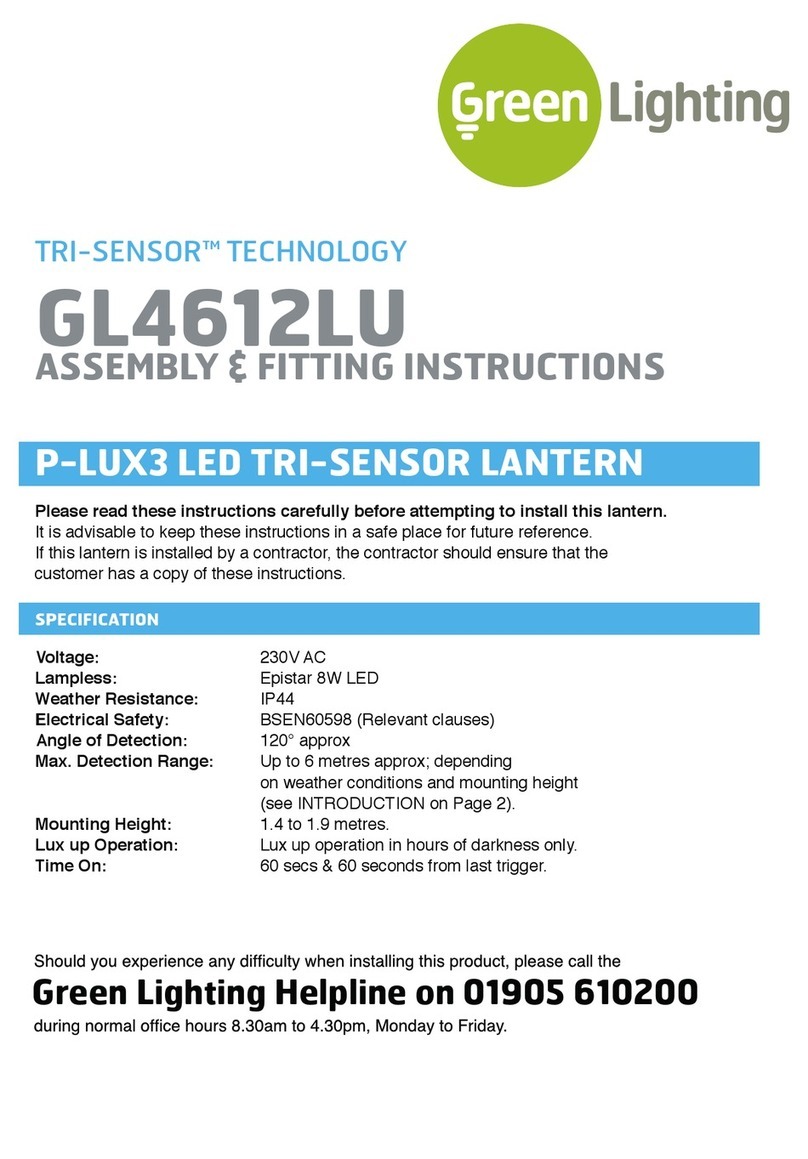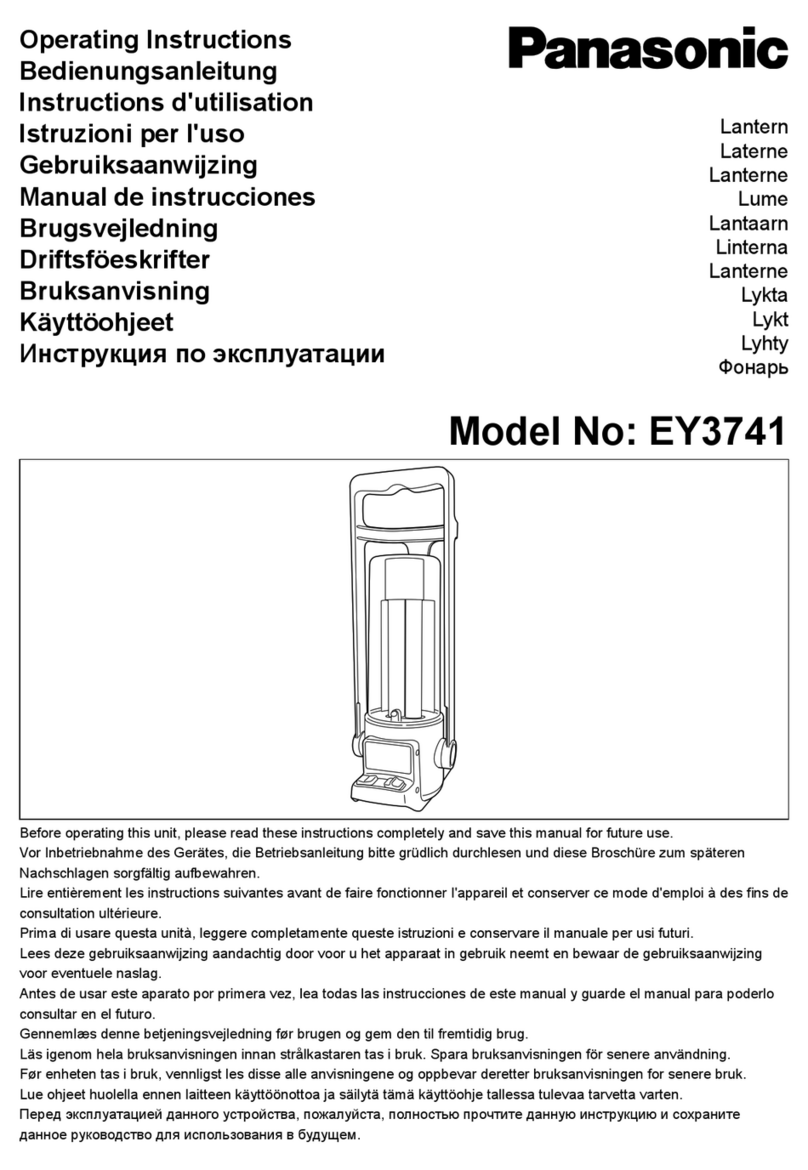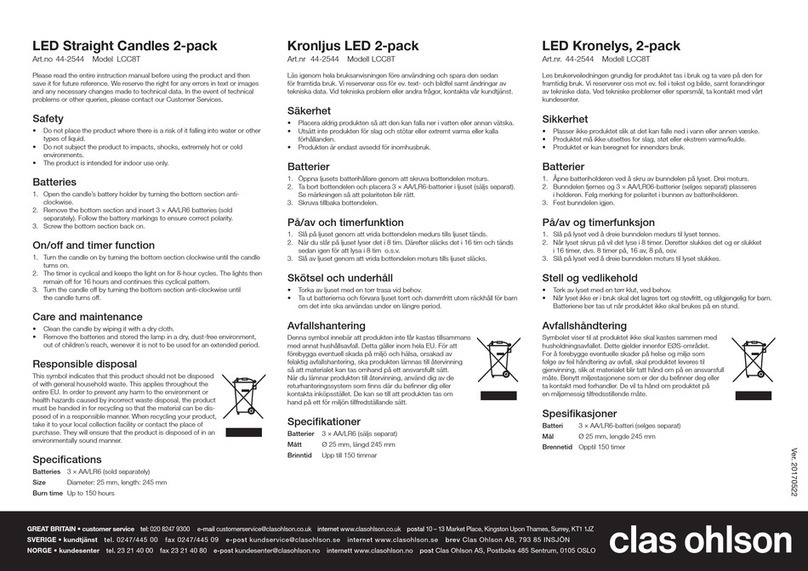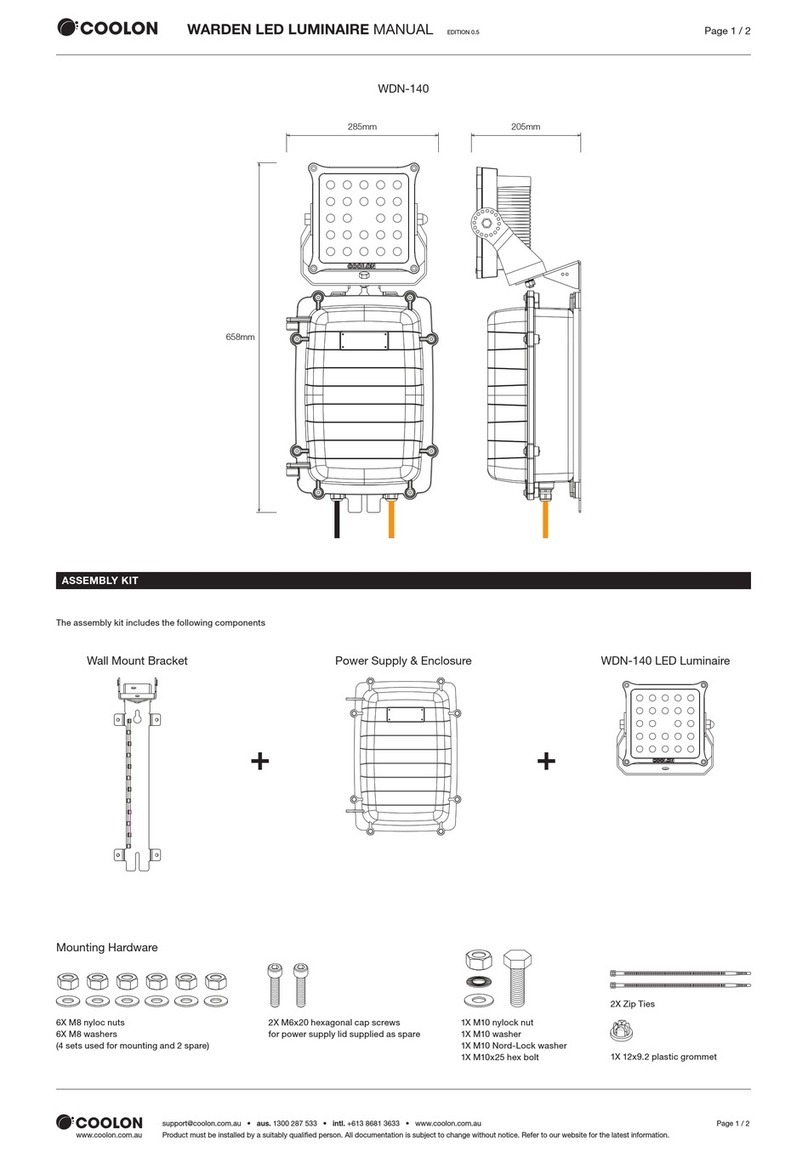
7
SECTION 10: SELF DIAGNOSTICS/ SELF -TESTING OPTION DIAGNOSTIC
CODES
2. Dual color LED lamp indicator shows the following status:
A) Green Color: (ON/Ready); (Blinking: Testing)
B) Red Color (Service Alert): see table below for Service alert LED code
One blink ON/Pause (4 Seconds)
Two blinks ON/Pause (4 Seconds)
Battery is shorted or battery voltage drops
below acceptable level
Three blinks ON/Pause (4 Seconds)
Charger board circuit fault
Four blinks ON/Pause (4seconds)
Five Blinks ON/Pause (4Seconds)
CAUTION:
After resolving the fault error, press test button for 2 seconds without releasing to reset product to normal function.
LED indicator will illuminate green if all faults have been cleared.
3. For manual Test, press test button the specified number of times indicated below within 2 seconds for the test
duration required.
Press test button 3 times
Press test button 4 times
1.When AC Power is supplied to fixture, the unit will automatically initiate a self-test and self
diagnostic test as follows:
A). Verifies battery connection, charger board failure, lamp failure and transformer
failure every 4 seconds.
B). One minute self-testing every month.
C). 90 minutes self-testing on the 12th month of each year after fixture has been installed.
SECTION 11: TESTING AND TROUBLE SHOOTING
To manually test battery backup (EM) units, use test switch to simulate AC power outage. The LED array
will turn on and LED indicator will turn off. Release the switch to automatically restore AC/Battery charge
mode. Units with Self Diagnostics/ Self test capabilities will automatically perform a self test and diagnostic
function monthly. Self test will disable charger and turn on LED array to check the load, battery and transfer
function. Test will be performed only if the battery is fully charged.
Testing for longer periods of time is best accomplished by turning off AC circuit power. Fixtures should be
tested in accordance with the National Electric Code and NFPA Life Safety Code
NOTE: the batteries will take some time to reach full charge after a prolonged test, and the unit cannot
provide full operation should a real power outage occur before the batteries recharges to full capacity. It is
recommended that long duration tests be limited to once yearly, and be conducted when the area will be
unoccupied afterwards.
TROUBLE SHOOTING GUIDE:
If the LED array or indicator does not illuminate check the following:
1. Check AC Supply - verify that there is continuous power supplied to the fixture
2. Check if the unit may be shorted
3. Verify the battery leads are connected
4. If the battery was discharged, permit the unit to charge for 24 hours minimum then re-test
5. If the above checks do not resolve the issue, contact the factory for assistance.


